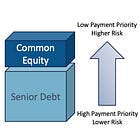Zombie Deals in Commercial Real Estate
They’re Current on Debt, Out of Equity, and Quietly Soaking Up Rescue Capital
Let’s get one thing straight: the commercial real estate market isn’t collapsing. But to say it’s thriving would be a stretch. If the market were a movie, this wouldn’t be a disaster flick (nor would it be a feel-good comeback story, IMO).
It’s more like a slow-burn B rated zombie film, where the real danger isn’t the obvious carnage, but the evil-tempered half-dead guys in the bushes. Today, we’ll talk about “zombie deals” in CRE.
Why should you care?
Because zombie deals are becoming increasingly common. A surprising number of the deals I see raising rescue capital fall squarely into this category: technically “performing,” but economically dead.
To be fair, some of these situations might justify fresh capital. But many are money pits in disguise. Let’s talk about it.
Quick reminder: this is not financial advice. All information is shared strictly for educational purposes. Please do your own due diligence.
What’s a Zombie Deal?
I’m not talking about abandoned, decaying buildings. While those "zombie properties" certainly exist (hello, office sector!), the term "zombie deal" refers to an asset or portfolio that is technically current on its debt, not in default, yet has virtually no equity left.
Unlike truly distressed assets, which are visibly underperforming and often in technical default due to low occupancy, zombie deals might even appear operationally healthy (stable occupancy, active leasing, market-rate rents).
The problem isn't the property's day-to-day, but its capital structure.
This "invisible" distress is largely a byproduct of the "extend-and-pretend" strategy (the classic kick the can down the road maneuver). This allows lenders and sponsors defer formal default to avoid recognizing losses on their balance sheets. It's a collective act of postponing financial pain, pushing the problem into the future and prolonging the market's "muddle-through" phase.
What’s Fueling the Zombie Apocalypse?
Take a look at this chart: $957 billion in commercial mortgages are maturing in 2025. On paper, this looks like an apocalypse, but in reality, many of these maturities have already been kicked down the road—pushed forward from 2023 and 2024.

Several forces are combining to keep zombie deals walking. And it’s a pretty toxic mix of higher rates, frozen exit markets, and refinancing gaps.
Rising rates, falling valuations. Even with the Fed trimming rates to 4.5% and maybe down to 3.9% by year-end, the 10-year Treasury yield is still above 4%. New CRE loans are averaging 6.2% interest, significantly higher than the 4.3% average for maturing loans. This environment drives investors to demand higher cap rates (which, in turn, leads to lower property valuations).
No way out. Deal volume is showing signs of life, but we’re nowhere near pre-2022 levels. Lenders don’t want to book losses. Borrowers don’t want to sell at a discount. That leaves zombie deals stuck in portfolios.
The DSCR trap. Debt Service Coverage Ratios (DSCRs) are tight. Properties that underwrote comfortably at 4% rates are now gasping for air at 6%. Even if NOI holds steady, they simply can’t refi at the same loan amount. One recent estimate suggests up to 15% of 2025 maturities won’t qualify for refinancing at par.
How Do You Spot a Zombie Deal?
Here’s what to look for:
Overlevered capital stacks.
Deals from the low-rate party years (2020–2022) were often originated at north of 80%+ LTV with floating rate debt of financial engineering (multiple tranches of equity). When rates spiked, these deals became financially un-alive. (In many cases, the “preferred” tranche of equity wants out - in some of those cases, this equity can force the GP’s hand and force a sale). Read this for a deeper dive:





